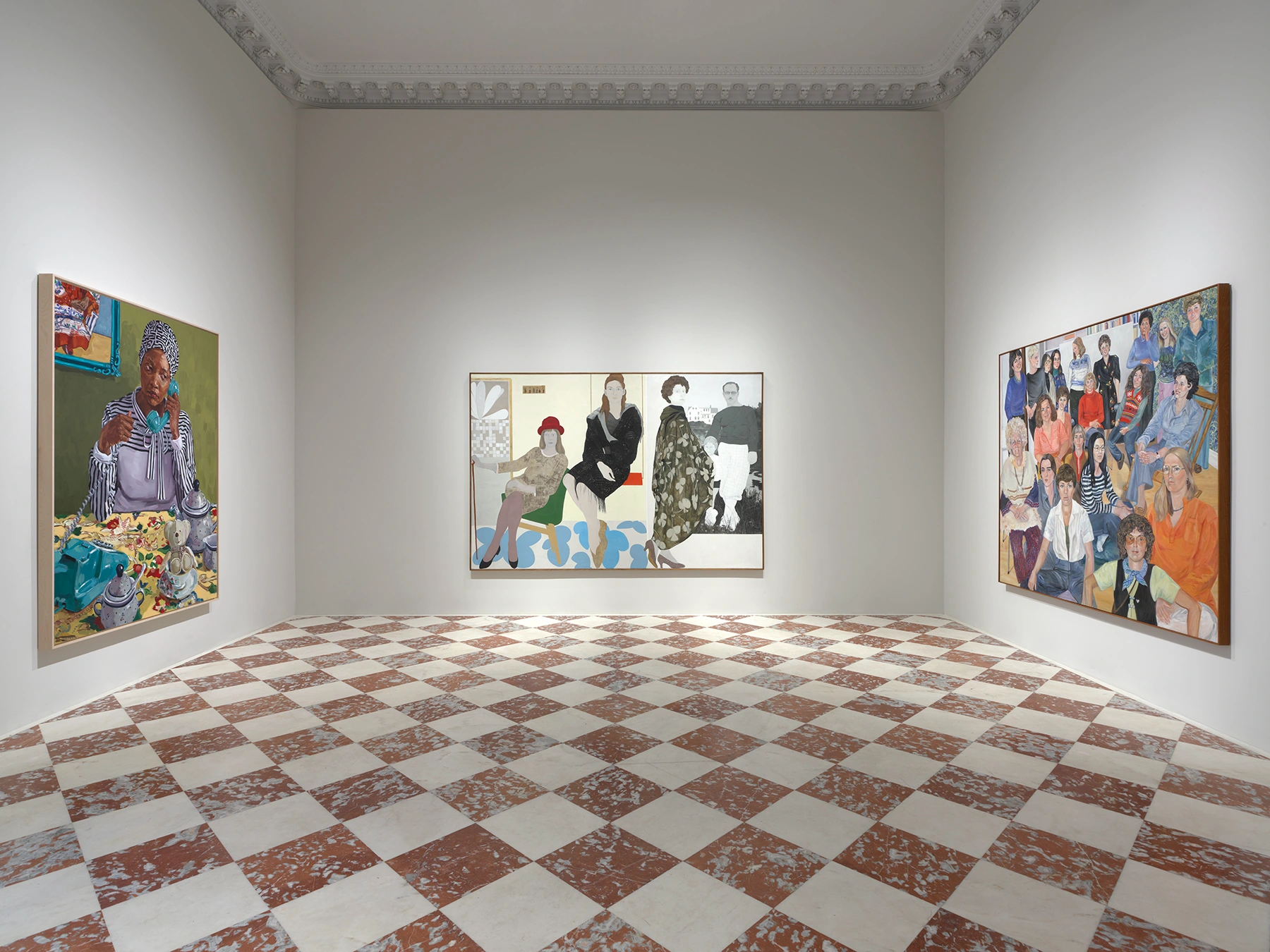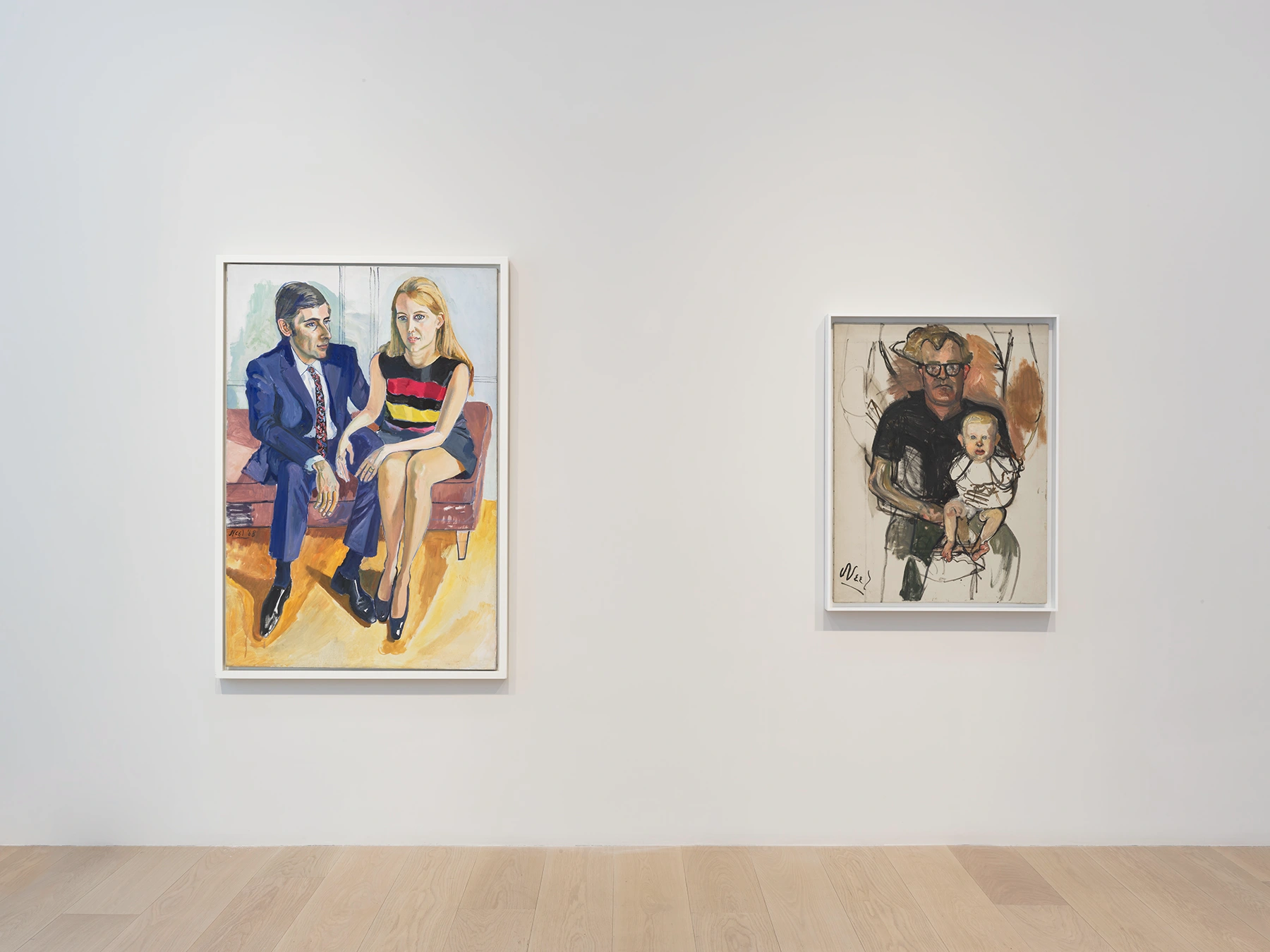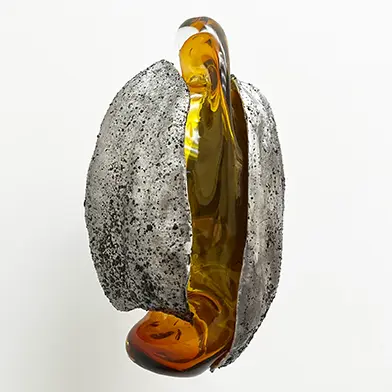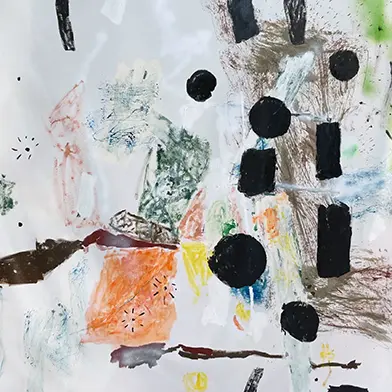Open: Tue-Sat 10am-6pm
19 East 64th Street, NY 10065, New York, United States
Open: Tue-Sat 10am-6pm
Visit
The Human Situation: Marcia Marcus, Alice Neel, Sylvia Sleigh
Lévy Gorvy Dayan, New York
Thu 10 Apr 2025 to Sat 21 Jun 2025
19 East 64th Street, NY 10065 The Human Situation: Marcia Marcus, Alice Neel, Sylvia Sleigh
Tue-Sat 10am-6pm
Artists: Marcia Marcus - Alice Neel - Sylvia Sleigh
Lévy Gorvy Dayan presents The Human Situation: Marcia Marcus, Alice Neel, Sylvia Sleigh. The exhibition, conceived by Saara Pritchard, marks the first focused presentation of Marcia Marcus (1928–2025), Alice Neel (1900–1984), and Sylvia Sleigh (1916–2010), who each worked in New York City and shared in its artistic circles in the dynamic decades of the 1960s, 1970s, and 1980s. During this period, they portrayed mutual sitters, exhibited together, and participated in public discussions. Their representations of loved ones, friends, and acquaintances are distinctive in form and style, yet share in their evocation of the human spirit, capturing Sleigh’s reflection “The human situation adds a certain poignancy to portraits...”
In 1973, paintings by the three figurative artists were on view in the unprecedented exhibition Women Choose Women, organized by Women in the Arts and presented at the New York Cultural Center. The three painters would exhibit together again in the following years, notably in Women’s Work: American Art 1974, Philadelphia Civic Center and In Her Own Image, Samuel S. Fleischer Art Memorial, administered by the Philadelphia Museum of Art (both part of Focus on Women in the Visual Arts, 1974)—as well as Sons and Others: Women Artists See Men, Queens Museum (1975). Marcus, Neel, and Sleigh too were early participants in the collaborative installation The Sister Chapel, PS1, New York (1978)—from which Marcus eventually withdrew due to teaching and other exhibition commitments—with Neel and Sleigh unveiling large-scale paintings.
In their works, each artist differentiated herself from prevailing modes of Abstract Expressionism, Pop, and Minimalism—capturing Neel’s predecessor Robert Henri’s principle “Paint what you feel. Paint what you see. Paint what is real to you.” Their distinguished images depicted many of the same artistic and critical figures, including David Bourdon, Sari Dienes, Red Grooms and Mimi Gross, and John Perreault, among others, as well as self-portraits. They also each painted or collaborated with writers and curators such as Lucy Lippard, Cindy Nemser, Linda Nochlin, Barbara Rose, Marcia Tucker, and Sleigh’s husband Lawrence Alloway.
While working at different phases of maturity in their practices during the 1960s and 1970s, they experienced the period’s socio-political movements, including for civil and women’s rights. This historical environment is described by Lucy Lippard in her exhibition catalogue introduction for Women Choose Women: “A large- scale exhibition of women’s art in New York is necessary at this time for a variety of reasons: because so few women have up until now been taken seriously enough to be considered for, still less included in, museum group shows; because there are so few women in the major commercial galleries; because young women artists are lucky if they can find ten successful older women artists to whom to look as role models; because although seventy-five percent of the undergraduate art students are female, only two percent of their teachers are female. And above all—because the New York museums have been particularly discriminatory, usually under the guise of being discriminating.”
Although the three artists aligned with and participated in feminist causes to varying degrees, the energies of the movement created a focus on women’s art, resulting in exhibitions, galleries such as AIR Gallery and Soho 20 Gallery, grassroots publications, organizations including Women’s Interart Center and Women’s Caucus for Art, and panel discussions, in which they each featured. The portraits by Marcus, Neel, and Sleigh gesture towards this critical art-historical moment, while illuminating for viewers each artist’s distinctive point of view. As a testament to their legacies, the exhibition will feature works by contemporary figurative painters Jenna Gribbon, Karolina Jabłońska, Chantal Joffe, Nikki Maloof, Wangari Mathenge, and Claire Tabouret, who carry forward the tradition of rendering lived images of self, family, friends, and the home. Presenting recent and new canvases created on the occasion of the exhibition, the contemporary artists will share in the history and atmosphere of community, and will expand upon the themes of womanhood, intimate portraiture, the nude, and the still life that underlie The Human Situation.











